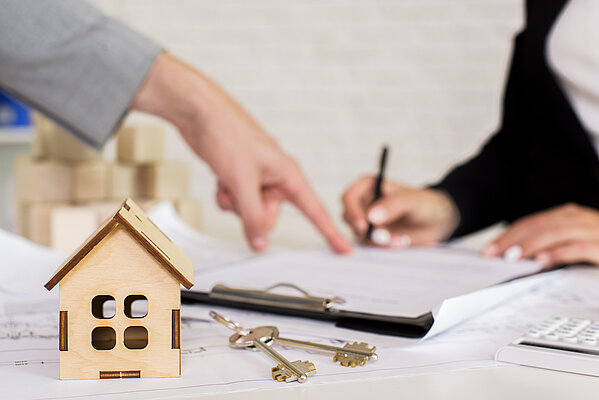
Moving in
Once you've found housing that suits your needs and budget, there are a few steps you need to take before you can move in:
- Visit the place to confirm your choice;
- Sign the lease if your application has been accepted by the landlord or agent;
- Carry out a walk-though inspection with the landlord;
- Subscribe to all the services you need to live in your new home (electricity, water, gas, internet...).
Before accepting a place, visit it several times at different times, especially in the early evening or in bad weather, to assess the need for artificial lighting. As a general rule, open and close doors and cupboards several times, turn on taps and switch on lights to check for any malfunctions.
A few points to consider during your visit:
- Exposure: A well-exposed home will be brighter and will require less lighting and heating. It will therefore be more economical. Tip: Download a compass application on your smartphone to check the exposure of the property.
- Check the windows: number, size, opening and closing, double glazing for noise and heat insulation, shutters for privacy.
- Location: pay close attention to the distance between your accomodation and other buildings. This will affect the brightness of the house and your privacy. In a city, lower apartments will get less light.
- Overall condition of the building inside and out: presence of mold, ventilation system, acoustic and thermal insulation.
- Neighbourhood dynamics: peace and quiet, traffic flow, transportation times, access to shops, nightlife.
- Noisy activities: ask the neighbours about the surrounding area (restaurants, bars).
- Heating system: Does the heating system fit the size of the property and how much energy does it consume: consult the Energy Performance Diagnostic (DPE—label A for the best energy performance and G for the worst).
What is Decent Housing?
French law requires landlords to provide decent accommodation. This accommodation must meet 5 criteria:
- A minimum surface area of 9m2 and a ceiling height of 2.20 metres;
- No risk to the tenant's health or safety;
- No vermin or pests (rats, bedbugs, cockroaches...);
- A heating system that provides normal heating with minimum energy efficiency;
- Provision of certain facilities (sanitary facilities, kitchenette or kitchen).
Basements cannot be rented as a place to live.
Now that your application has been accepted by the landlord, it's time to formalize your access to the property by signing the lease contract. This contract must be in writing, dated and signed by the landlord(s) and those who will live in the accomodation. You must keep a copy of the lease.
Key Points
- The effective date of the lease (the date you will move in). It may be different from the date you sign the lease (e.g. you signed in March, but you will move in in September).
- The length of the tenancy: empty accommodation is usually rented for three years, furnished accommodation for one year and student accommodation for 9 months.
- The price of monthly rent and when it is due.
- The price of additional fees.
- A description of the accommodation.
Beware!
When you sign the lease, you only need to pay the deposit:
- 1 month's rent excluding service fees for an empty property and 2 months' rent excluding service fees for a furnished property,
- The deposit will be given back to you when you leave, either in full or in part, depending on potential damage.
The walk-through inspection is the assessment of the state of the accommodation, room by room (as well as a furniture inventory if the place is furnished), made by both the tenant and the landlord together. That walkthrough inspection takes place when you move in, as well as when you move out, to evaluate the potential use or damage. In some cases, management fees are asked for move-in inspections. If the space is indeed damaged when you leave it, the landlord can use the deposit (and potentially ask for a financial supplement upon presentation of an invoice) to cover renovation expenses. You have 10 days after signing the inspection document to correct it.
How do you carry out the inspection?
- Take photos that will complement the written information.
- Do not hesitate to check everything (shutters, functioning of household appliances, key on doors, smoke detector, etc).
- Read the water, electricity and gas meters, if there are any.
Walk-through Inspection Photos
You can take photos, but they do not replace the official document of the walk-through inspection.
They must be approved by both you and the landlord for them to be considered. At the end of the inventory, send the photos to the landlord's email address and to yours. This way the photos will be dated and cannot be altered later, as everyone will have received the original version.
 I Am in Strasbourg
I Am in Strasbourg
